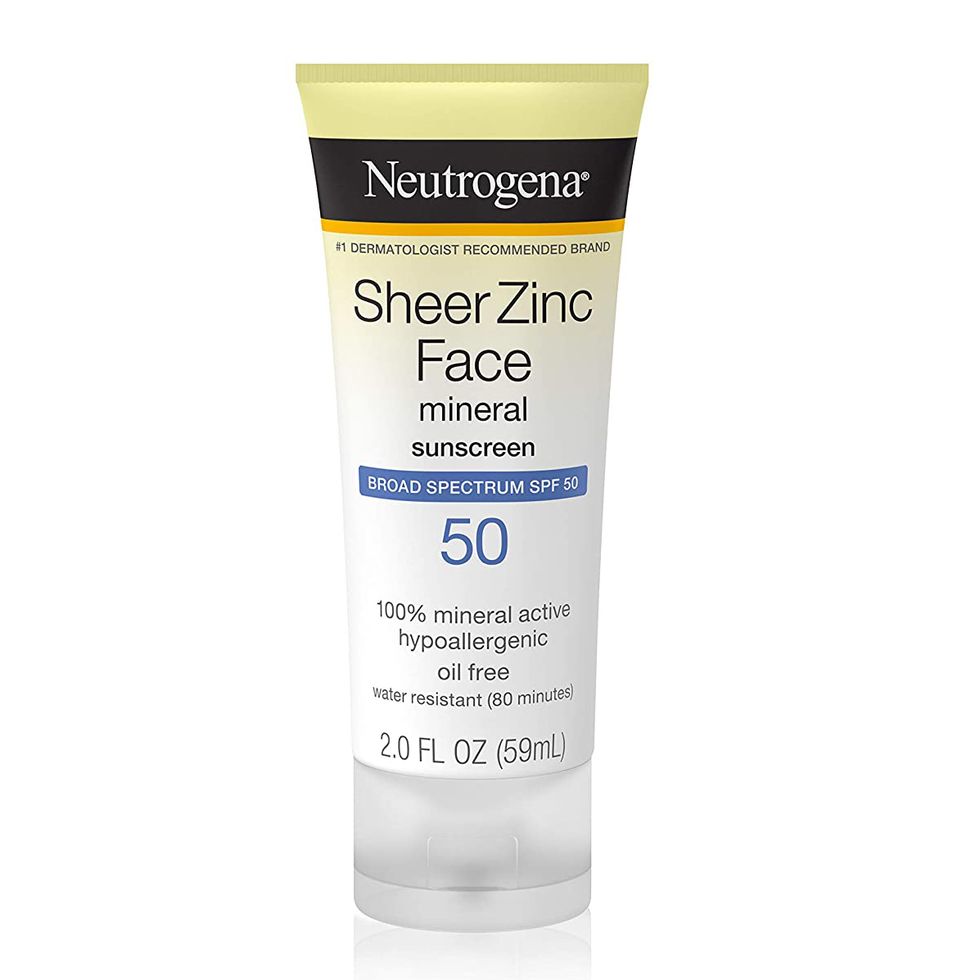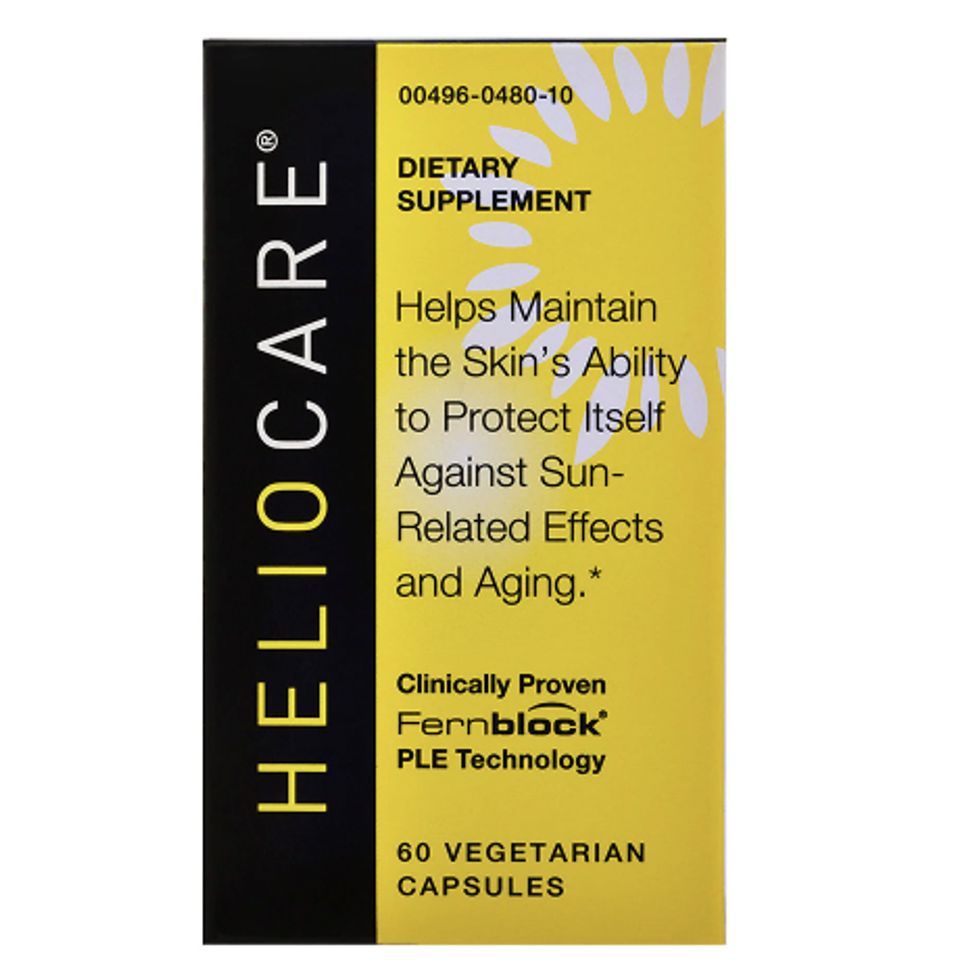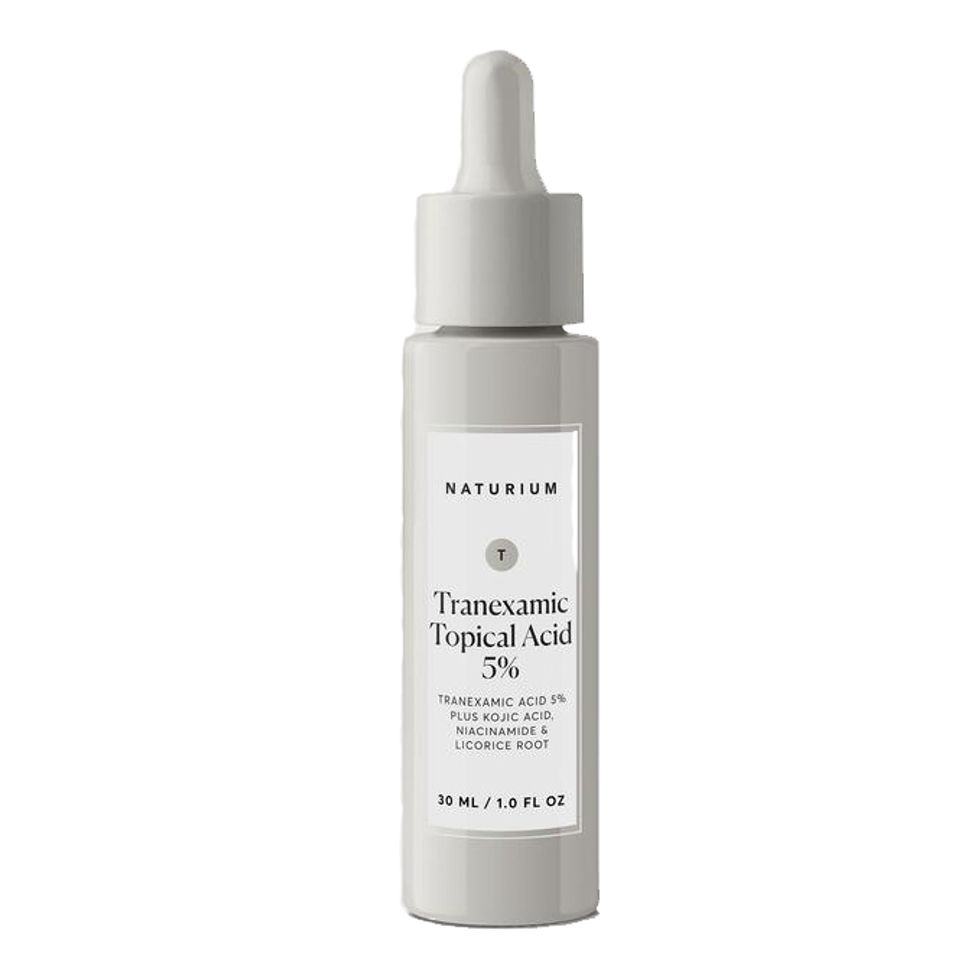So You Have Melasma—Now What?
Why this pesky form of hyperpigmentation is so tough to treat—but not impossible.
25 September, 2020
Skin
10 November, 2021
It hardly seems possible, but summer is over, fall has arrived, and our skin bears all the signs of afternoons at the beach and pool, with varying degrees of sunscreen usage or protective clothing. Whether or not you’ve embraced SPF as a part of your daily routine (reminder that it is *the* most effective anti-aging ingredient in your cabinet), you might have some unwanted pigmentation left over. And to make matters worse, if you’re a woman, you have the added factor of your hormones to contend with—whether you’re pregnant, taking birth control, or none of the above.
Yes, we’re talking about melasma, those pesky dark patches that, according to a 2018 Harvard study, affect up to six million American women (although men can also develop it). Not only that, but Dr. Barbara Gilchest, senior lecturer on dermatology at Harvard Medical School and the expert for the paper, reveals that “women who develop melasma in their teens or 20s or 30s may see it stay around for decades.” In other words, it’s a formidable skin foe.
But let’s back up—how exactly is this form of pigmentation different from other types of dark spots? Melasma is similar in that it appears when your pigment-producing cells, aka melanocytes, are too active. And because people with darker skin tones have more melanocytes than those with lighter skin, they are more vulnerable to this type of unwanted pigmentation. These patches are also larger than, say, freckles or brownish age spots (which are subject to the same pigment-producing mechanism) and often appear in telltale locations like the upper lip, cheeks, and forehead.
“Melasma is a disease of pigmentation,” says board-certified dermatologist and Skin Medicinals founder Dr. Dhaval Bhanusali. “Your body secretes pigment in response to triggers like UV rays, although there is increasing evidence that visible light can produce pigmentation as well.”
Dr. Shadi Kourosh, director of the Pigmentary Disorder and Multi-Ethnic Skin Clinic at Massachusetts General Hospital, explains in the Harvard paper that “melasma can be caused or worsened by not only the sun’s rays, but also heat and visible light. This means that even sunscreens that protect against skin cancer aren’t enough to ward off melasma.” Translation? Chemical-based sunscreens, which absorb the sun’s rays before transforming them into heat and releasing them into the body, will not prevent melasma from forming.
Dr. Macrene Alexiades, MD, PhD, FAAD, also stresses, “Melasma is due to the combined effects of hormones (pregnancy, oral contraceptives, menopause) and sun exposure.” Things like switching to a new form of hormonal birth control—which, as any woman knows, can kick off a whole host of new skin problems—are very often an underlying cause of pigmentation.
So, while melasma can be triggered by both hormones and sun exposure/heat, the two are often intertwined. If you initially see dark spots after a few weeks in the sun, and then start a new birth control, or vice versa, the secondary stimulus will further exacerbate the pigmentation. It’s sort of the skin-care version of the chicken-or-the-egg conundrum—regardless of where your melasma originated, both factors will need to be taken into consideration for treatment.
That all sounds quite frustrating—so how exactly do we get rid of it? First and foremost, you should visit your dermatologist to determine whether or not those dark spots are, in fact, melasma. They’ll be able to recommend an appropriate course of treatment, namely, if your case is severe enough to require a prescription topical cream or if you can use an over-the-counter option. Many of these creams contain a combination of brightening ingredients like hydroquinone (which is not suitable for darker skin tones), tretinoin (the prescription form of vitamin A), and other skin-care acids like tranexamic acid and kojic acid, all of which will need to be used for several weeks to see any improvement. Dr. Bhanusali also recommends his patients take supplements with strong data behind them, like Heliocare, “which contains polypodium leucotomos extract, which has been shown to help protect you from UV damage.”
In terms of hormonal regulation, switching your form of birth control or choosing to go with a non-hormonal option, like the copper IUD or condoms, might help to lessen the severity of your pigmentation. Again, the science of the correlation, or which exact hormones are the direct cause of melasma, has not been perfected, which—although frustrating—means that you might need to try out a few different avenues to find the one that’s right for you.
But the easiest thing you can do to help prevent melasma in the first place is to use a physical sunscreen (Dr. Alexiades swears by Neutrogena Mineral SPF 100) every single day and re-apply every two hours. Depending on your suggested course of treatment, your doctor may have a preferred SPF for you to try. Or you could peruse one of our favorite physical options on the market right now. She also recommends avoiding fractional resurfacing or IPL lasers in your 20s and 30s, as this may prompt melasma to develop. And above all, to “see a dermatologist early and act quickly to avoid it getting severe.”
While it may seem especially difficult to treat this particular form of pigmentation, incorporating safe sun practices will go a long way in ensuring that your skin looks even-toned and damage-free throughout your life.
Yes, we’re talking about melasma, those pesky dark patches that, according to a 2018 Harvard study, affect up to six million American women (although men can also develop it). Not only that, but Dr. Barbara Gilchest, senior lecturer on dermatology at Harvard Medical School and the expert for the paper, reveals that “women who develop melasma in their teens or 20s or 30s may see it stay around for decades.” In other words, it’s a formidable skin foe.
But let’s back up—how exactly is this form of pigmentation different from other types of dark spots? Melasma is similar in that it appears when your pigment-producing cells, aka melanocytes, are too active. And because people with darker skin tones have more melanocytes than those with lighter skin, they are more vulnerable to this type of unwanted pigmentation. These patches are also larger than, say, freckles or brownish age spots (which are subject to the same pigment-producing mechanism) and often appear in telltale locations like the upper lip, cheeks, and forehead.
“Melasma is a disease of pigmentation,” says board-certified dermatologist and Skin Medicinals founder Dr. Dhaval Bhanusali. “Your body secretes pigment in response to triggers like UV rays, although there is increasing evidence that visible light can produce pigmentation as well.”
Dr. Shadi Kourosh, director of the Pigmentary Disorder and Multi-Ethnic Skin Clinic at Massachusetts General Hospital, explains in the Harvard paper that “melasma can be caused or worsened by not only the sun’s rays, but also heat and visible light. This means that even sunscreens that protect against skin cancer aren’t enough to ward off melasma.” Translation? Chemical-based sunscreens, which absorb the sun’s rays before transforming them into heat and releasing them into the body, will not prevent melasma from forming.
Dr. Macrene Alexiades, MD, PhD, FAAD, also stresses, “Melasma is due to the combined effects of hormones (pregnancy, oral contraceptives, menopause) and sun exposure.” Things like switching to a new form of hormonal birth control—which, as any woman knows, can kick off a whole host of new skin problems—are very often an underlying cause of pigmentation.
So, while melasma can be triggered by both hormones and sun exposure/heat, the two are often intertwined. If you initially see dark spots after a few weeks in the sun, and then start a new birth control, or vice versa, the secondary stimulus will further exacerbate the pigmentation. It’s sort of the skin-care version of the chicken-or-the-egg conundrum—regardless of where your melasma originated, both factors will need to be taken into consideration for treatment.
That all sounds quite frustrating—so how exactly do we get rid of it? First and foremost, you should visit your dermatologist to determine whether or not those dark spots are, in fact, melasma. They’ll be able to recommend an appropriate course of treatment, namely, if your case is severe enough to require a prescription topical cream or if you can use an over-the-counter option. Many of these creams contain a combination of brightening ingredients like hydroquinone (which is not suitable for darker skin tones), tretinoin (the prescription form of vitamin A), and other skin-care acids like tranexamic acid and kojic acid, all of which will need to be used for several weeks to see any improvement. Dr. Bhanusali also recommends his patients take supplements with strong data behind them, like Heliocare, “which contains polypodium leucotomos extract, which has been shown to help protect you from UV damage.”
In terms of hormonal regulation, switching your form of birth control or choosing to go with a non-hormonal option, like the copper IUD or condoms, might help to lessen the severity of your pigmentation. Again, the science of the correlation, or which exact hormones are the direct cause of melasma, has not been perfected, which—although frustrating—means that you might need to try out a few different avenues to find the one that’s right for you.
But the easiest thing you can do to help prevent melasma in the first place is to use a physical sunscreen (Dr. Alexiades swears by Neutrogena Mineral SPF 100) every single day and re-apply every two hours. Depending on your suggested course of treatment, your doctor may have a preferred SPF for you to try. Or you could peruse one of our favorite physical options on the market right now. She also recommends avoiding fractional resurfacing or IPL lasers in your 20s and 30s, as this may prompt melasma to develop. And above all, to “see a dermatologist early and act quickly to avoid it getting severe.”
While it may seem especially difficult to treat this particular form of pigmentation, incorporating safe sun practices will go a long way in ensuring that your skin looks even-toned and damage-free throughout your life.
Want more stories like this?
The 6 Best Dark Spot Correctors for Black and Brown Skin
8 Anti-gging Bakuchiol Products Your Sensitive Skin Will Love
The Best Over-the-Counter Ingredients to Fight Dark Spots, According to Your Dermatologist
The 6 Best Dark Spot Correctors for Black and Brown Skin
8 Anti-gging Bakuchiol Products Your Sensitive Skin Will Love
The Best Over-the-Counter Ingredients to Fight Dark Spots, According to Your Dermatologist


